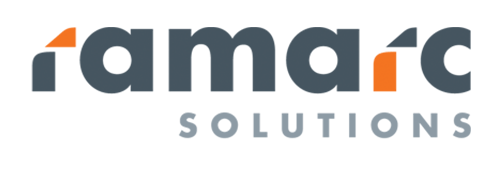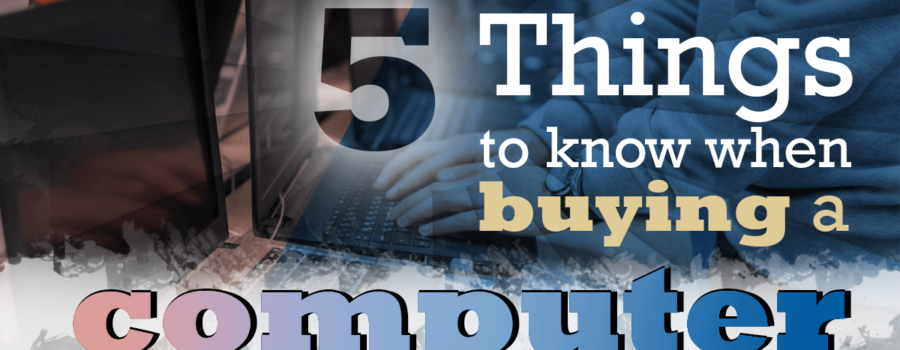Buying a computer is no easy task, and with the cost of many of the machines out on the market today, you want to make sure you’re making the right purchase so you don’t blow your money on something that stops meeting your demands within a year. Not all machines are created equal, and unless you’re pretty familiar with computer hardware, you might have a hard time determining just how unequal they are. Of course, not all computer users’ needs are equal, so you might not need certain things included in a computer, especially not if those features are pushing up the price.
This guide should help you get a better understanding of what all the components of the computer will mean for you and make it easier to decide what you want, need, and which elements to prioritize. That way, you’ll be better equipped to get the right computer for you, and to avoid spending any more money than you must.
Know the processor and what it means
The simplest way to explain the processor is that it’s the brain of the machine. If you want a fast computer that boots up programs in a flash, completes tasks as soon as you start them, and doesn’t keep you waiting, then you want the strongest processor available — and who doesn’t? You just have to know what you’re looking at when you see a processor’s details.
Basic: the short and simple of processors is in the number of cores and the speed (labeled in GHz or Gigahertz) of the processor. The speed of the chip will tell you how much data it can process in how much time, so the bigger the number, the better. The number of cores functions as a multiplier, as the processor is actually a stack of cores that each run at the listed speed (e.g. a single-core 2GHz processor is a lot slower than a four-core 2GHz processor).
RAM isn’t just a type of goat
Just as the number of processor cores in a computer affects its speed and ability to multitask, the amount of Random Access Memory, or RAM, in a computer can affect just how much multitasking it can handle and how fast it will be. RAM is basically a small, extra-fast form of memory (like L1, L2, or L3 cache, but bigger and slower).
Basic: Nowadays most RAM is measured in gigabytes, and as is often the case, the more, the merrier. By having more RAM, your computer is able to keep more data close at hand, rather than having to go digging around through the slower hard drive for the information it needs. Of course, because RAM is smaller, there is only so much room for data. That’s why it’s useful to have more RAM if you want to keep multiple tasks going at the same time, and to be able to jump between them relatively quickly. If you’re also guilty of having too many web browser windows open at the same time, more RAM will make that a lot easier.
Hard drives aren’t hard choices
Every computer needs data storage, and though that is something RAM does, the majority of it will go onto your hard drive. There are typically a few different options you’ll need to consider in the search for a hard drive, but what it really comes down to is how you plan to use your computer.
Basic: If you plan to just have your computer and no peripherals, you may want to opt for the biggest hard drive you can (measured in gigabytes, or terabytes for extra large drives), since all of your files and programs will be stored on the computer. If you don’t plan to have many applications on your computer, and won’t store media on it, then you can opt for a smaller hard drive and save yourself some money. If you can handle a small hard drive but want to it be extra fast and you have the cash, consider going for a solid-state drive, or flash hard drive.
There’s more to graphics than a sticker on your computer
Lately, computer makers have been tagging stickers on their computers to boast about the AMD or NVIDIA graphics cards they have included in their machines. Unfortunately, those mean thousands of different things, and it’s pretty hard to tell just what.
Basic: If you just want to know whether the card in the computer on the left is better than the one in the computer on the right, you can do a quick search on PassMark’s site for the graphics components in each. Some buzz words to be aware of are “integrated” and “dedicated.” The former is built into the computer’s processor and relies on the computer’s memory — typically this is a lower performance graphics component. A dedicated graphics card will include its own processor and memory, and will tend to be higher-performing — though a very old card might not best modern integrated graphics.
Check your peripherals
The peripherals on your computer are going to be pretty specific to your needs, so you’ll need to think about whether you’ll need them, and just how many of them you want. You may want ten USB ports but not have a care in the world about having a DVD drive. On the other hand, you may do everything online and just want as few holes in your machine as possible for soda to spill into and frazzle the circuitry.
USB: There is, thankfully, a standard that most computer peripherals opt to use, and it can be for anything from mouses and keyboards to hard drives and monitors — heck, you can even plug a guitar in via USB if you’ve found the right cord. A modern version of USB, called USB 3.0, is faster than its predecessors, but there’s an even newer version of USB, called USB Type-C, which offers gigabits of bandwidth and the ability to handle enough current to power a laptop. While USB Type-C will eventually become the single technology that you’ll use to connect all your devices, and is a good thing to have on a new machine, you’ll need to avoid off-brand cables that can fry your brand-new computer.
If you plan to transfer a lot of data, make sure you have a fast USB port— or a fast wireless network. An alternative for some major externals (like CD drives and hard drives) is to get a computer with an eSATA port, which will let you plug in those peripherals on the fly with high data transfer rates.
HDMI: If you’re going to use your machine for entertainment, you’ll probably want an HDMI output. This will allow you to connect it to most modern televisions for a high-quality visual display, and it will also run the audio out if you’re planning to use the TV for sound.
SD slot: If you work a lot with photography, an SD slot can be a handy way to get the files from your camera over to your computer. For computers with small hard drives, an SD card can also function as a small, out-of-the-way addition to the computer’s overall memory. For the slightly more savvy users, SD cards can even be used to speed up the system.
Wi-Fi: if you plan to connect to a lot of networks a lot of places and want to do it wirelessly, you’re probably best off getting a built-in Wi-Fi receiver rather than working with some sort of external Wi-Fi device. If you’re running a desktop computer, you can probably get away with running an ethernet cable straight into the computer without being constantly annoyed by the need for a wire to get internet.
Bluetooth: Just like Wi-Fi, you can get a built-in Bluetooth receiver with your computer, and that may be a smart move if you want to be a true wireless warrior. Whether it’s for sending audio to headphones or to a 7.1 channel surround sound set up that will keep your neighbors on their toes, Bluetooth is a handy way to make those connections easy and tangle-free. It may be worth it for these types of uses, otherwise, you can probably save yourself a few bucks by not seeking it out.
Read full article: 9 Key Things to Know Before You Buy a New Computer







